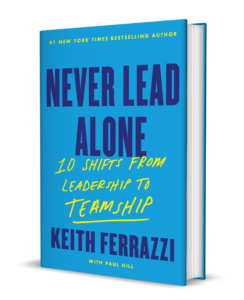Over the past several months, I’ve been chasing a question that feels central to our time: What does it really mean to be an AI-first company?
Not the buzzword version, but the lived reality. What do these organizations see that others don’t? How do they operate differently? Not simply because they use AI, but because AI is woven into their DNA?
This curiosity has led me on a series of conversations with founders and leaders who are building truly AI-native organizations. Each exchange offers a glimpse into the distinct choices that set these companies apart, and the lessons any leader can take, regardless of industry.
Reindeer is one of those companies. Their work reframes AI not as a project you finish, but as a living system that adapts and evolves with the business. It’s a mindset shift that feels urgently needed as so many leaders struggle with failed pilots and stalled initiatives.
What follows is part of that ongoing exploration: a conversation with Reindeer that challenged me to think differently about AI, not as a tool to install, but as an infrastructure to grow.
When I sat down with the leadership team at Reindeer, one theme came through loud and clear: “Too many leaders still treat implementing AI like a project that begins and ends,” Yoav Naveh, Co-Founder of Reindeer AI, told me. “They document a process, plug in a tool, and expect it to run forever. That’s automation thinking. AI is different. It has to adapt in real time. It’s more like a living system than a static program.”
Too many leaders also still think about AI the way they think about robotic process automation (RPA): document the steps, automate, and move on. But unlike RPA, which just executes instructions, AI is expected to make human-like decisions and it fails if treated the same way.
That metaphor, AI as a living system, was the thread through our conversation. Just like a high-performing team, AI needs feedback, coaching, and space to evolve. Treat it like a one-and-done installation, and it will fail. Treat it like a living system, and it can strengthen over time, learning alongside your organization.
Why AI Projects Fail Before They Scale
Reindeer’s work with enterprises across industries shows that leaders stumble in four predictable ways:
- Data readiness is overestimated. Sixty-three percent of organizations don’t have the right practices in place, according to Gartner. That’s why 60% of AI projects will be abandoned by 2026. Garbage in still equals garbage out.
- Leaders ignore the mess. Real-world processes are full of ambiguity: edge cases, undocumented knowledge, tacit expertise. Forty-two percent of institutional knowledge isn’t even shared internally. If AI can’t learn from that complexity, it collapses.
- They over-rely on the past. Even the best-trained models degrade as the world changes. Research shows 91% of machine learning models lose accuracy within 24 months. Without continuous retraining, your AI gets less useful every day.
- They fit AI into the wrong system. Systems of record are rigid by design. AI needs a flexible “system of work”, a layer where judgment, exceptions, and decisions actually happen.
What a Living Systems Approach Looks Like
So what does it mean to build AI as a living system? Reindeer outlined four principles that consistently make the difference when planning for AI adoption:
- Start small. You don’t need perfect documentation or 10,000 examples to get started. The key is to begin with a baseline of “normal” and let the system grow stronger with every human correction. Twenty real-world samples are enough to seed the system. From there, human-in-the-loop interactions help it learn edge cases over time.
- Build on what you already have. AI should operate inside the systems your teams already use, like your ERP, CRM, or EHR, rather than as a disconnected overlay.
When AI works on top of those systems directly, it has the context it needs to make good judgements. - Design for humility. Guardrails and confidence checks keep AI from guessing and route exceptions to humans. In practice, this means constraining what information sources the AI can draw from, and setting thresholds where the AI must escalate instead of hallucinating. Better an “I don’t know” than a wrong answer.
- Monitor, measure, retrain. Like any living system, AI needs feedback loops that involve your human team to stay healthy and avoid drift. Checks, balances and scheduled human review allow enterprises to catch accuracy issues early. If new document formats appear, or error rates rise, the system signals it’s time to retrain.
The Leadership Shift
What struck me in the conversation is that this isn’t just about smarter workflows. It’s about a new kind of leadership. AI will not thrive if treated like a static tool. It requires the same adaptability and resilience we demand from our people.
Too many leaders assume processes are neat, stable, and fully documented. In reality, they’re messy, undocumented, and constantly changing. That mismatch is the biggest reason “document and automate” fails before AI even has a chance to scale. To implement successfully, leaders must embrace that mess and design AI to evolve alongside it.
As Naveh put it: “AI should be nurtured, coached, and evolved. It’s not a project you finish. It’s an infrastructure you grow. One that strengthens alongside your business over time.”





